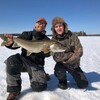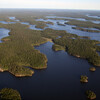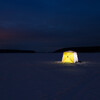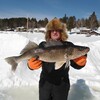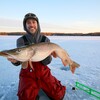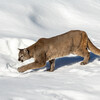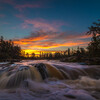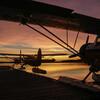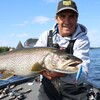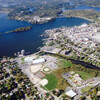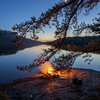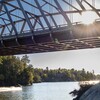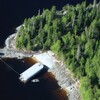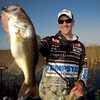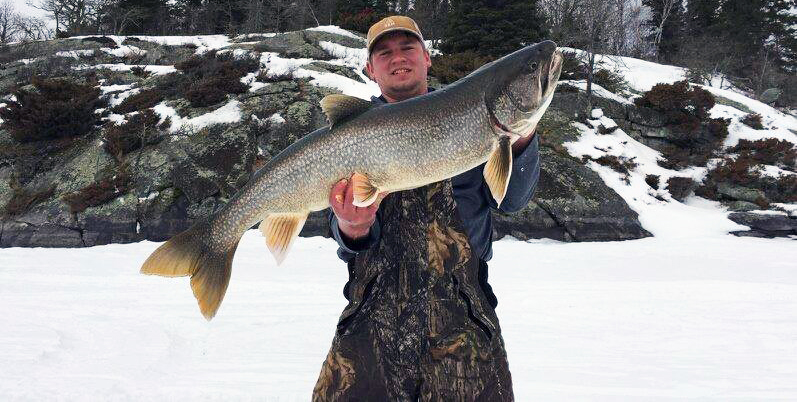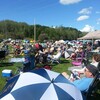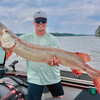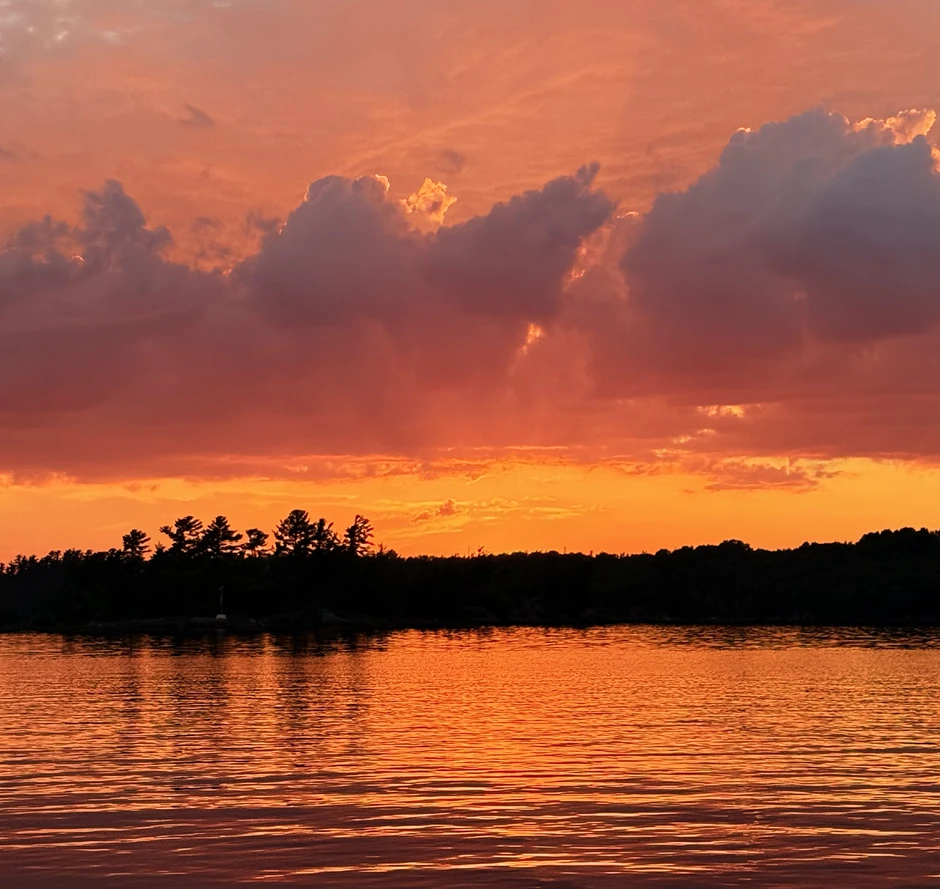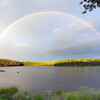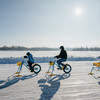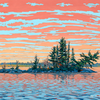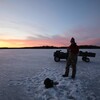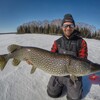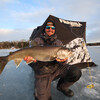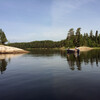
Ice Fishing Tips for Crappie
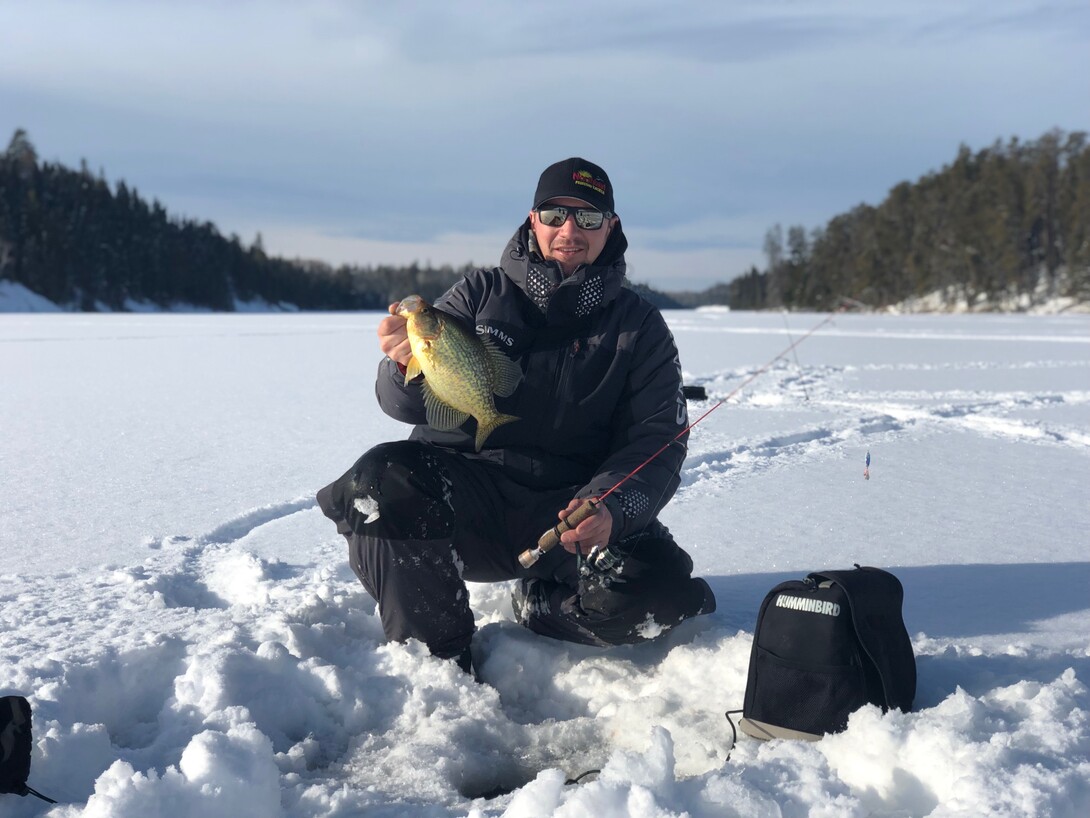
When anglers think about crappie fishing, Northwestern Ontario’s Sunset Country region is probably not the first place that comes to mind but I’m here to tell you that it should be. While they are not native to our part of the world, crappies are widespread across the southern portion of Sunset Country, maybe a by-product of bass stocking a century ago? They are here now and are a popular target by anglers throughout the year, particularly in the winter. Across the region, we have some amazing opportunities for crappies.
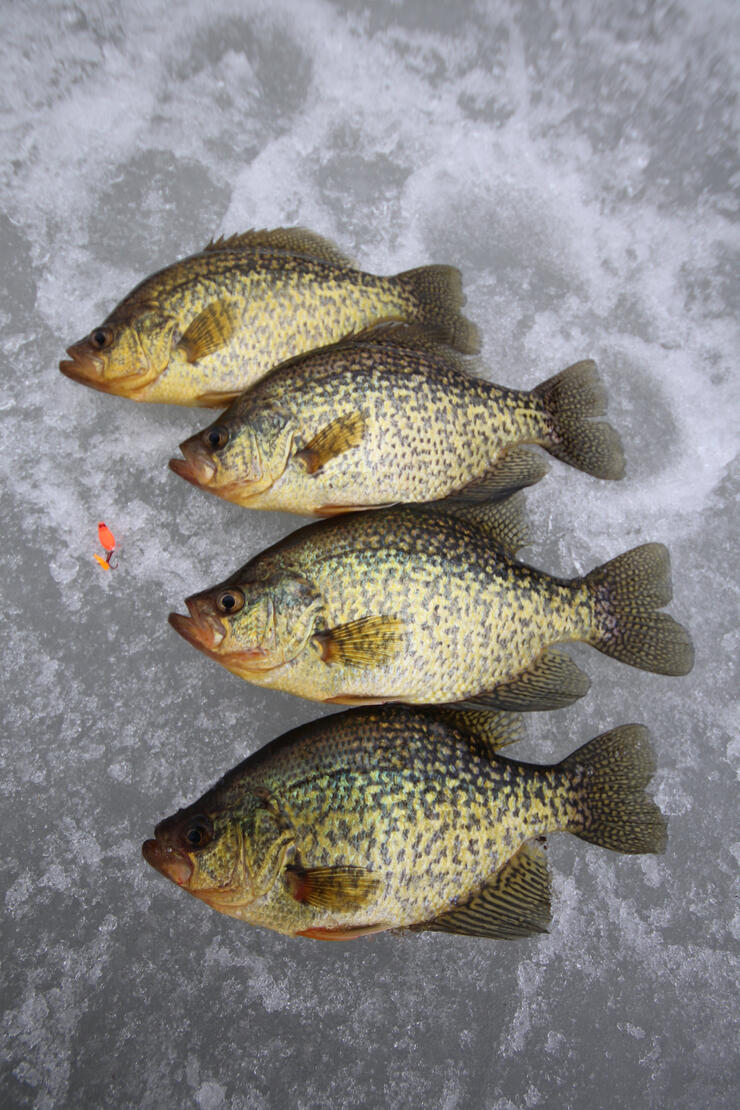
Where to catch crappies
When people ask me where to find crappies in the winter the best advice I can share is to look in the deeper holes in the lakes or bays where they live. Sounds simple, right? Crappies show up in shallow water in the spring to spawn but outside of that, they spend the rest of the year in deeper water. In the summer they suspend around deeper weed beds where they do a good job avoiding anglers but, in the fall, they show up in the deep holes where they’ll stay through the winter.
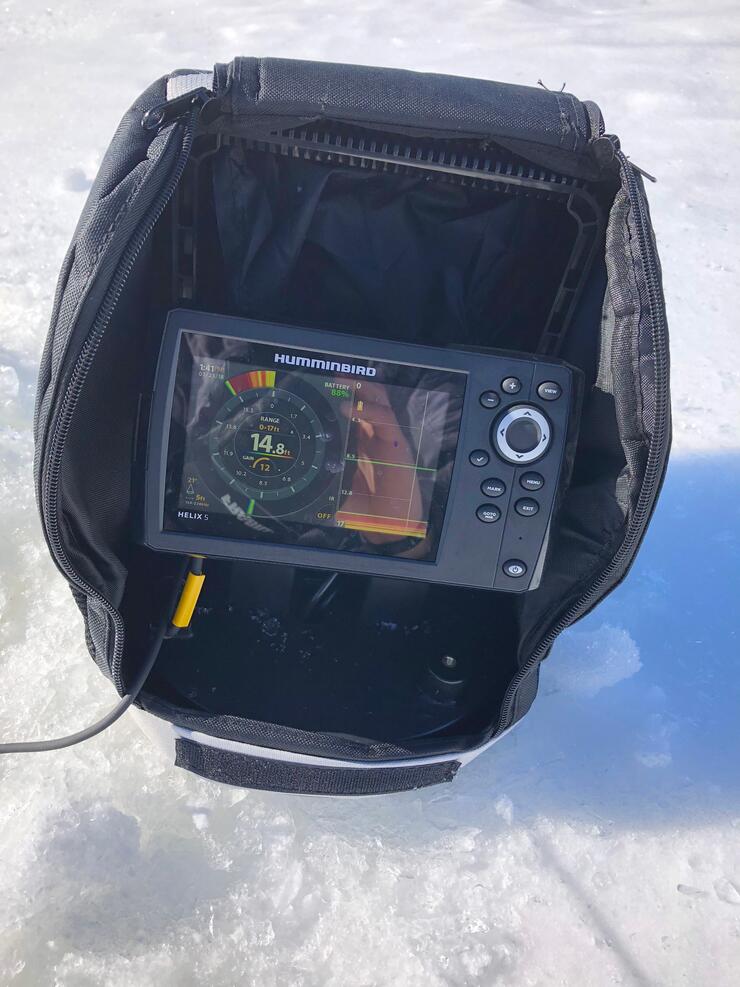
Many of the bigger waterbodies hold populations of crappies—Lake of the Woods, Rainy Lake, Wabigoon Lake, the Winnipeg River, Cedar Lake. And then there are dozens of smaller lakes that have populations as well. On most of these waters, crappies group up and show up in predictable winter holes.
- The good spots are on mud flats, sometimes on saddles between pieces of structure. Unlike most fish species that we target on structure, crappies are more likely to be around the edges of structure than right on top of it. I think they find more of the bugs and invertebrates that they eat above the soft bottom.
- The depth at that you’ll find crappies is relative to the mean depths on each body of water but generally, you want to focus your efforts between 20 and 40 feet of water. On shallower lakes, 20 is deep, and on deeper waters, 40 seems to be about as deep as crappies go.
- Electronics are critical for finding crappies under the ice because they are often suspended four to six feet above the bottom, sometimes more. If you fish blind without electronics you could be dropping your bait past them and not even know it. We’ll get into catching crappies more as we go here but you should know that they don’t look down.
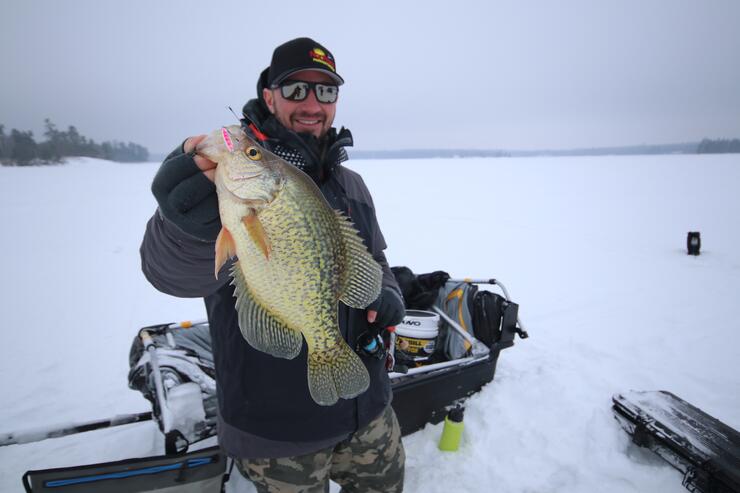
Across the region, there are some resorts that stay open in the winter to cater to ice anglers and crappies anglers in specific, especially around the Nestor Falls area on Lake of the Woods. Some of these outfits that specifically target crappies will know where to find them under the ice. Some of these resorts may even offer permanent shelters in prime locations if you want to fish in warm comfort. Many of the smaller lakes require snowmobiles or ATVs to access them but some of these waters offer the best fishing. My friends and I try a new lake or two every winter for crappies and every once in a while, we find a hidden gem. The guides and resort folks are the ones who know where these are.
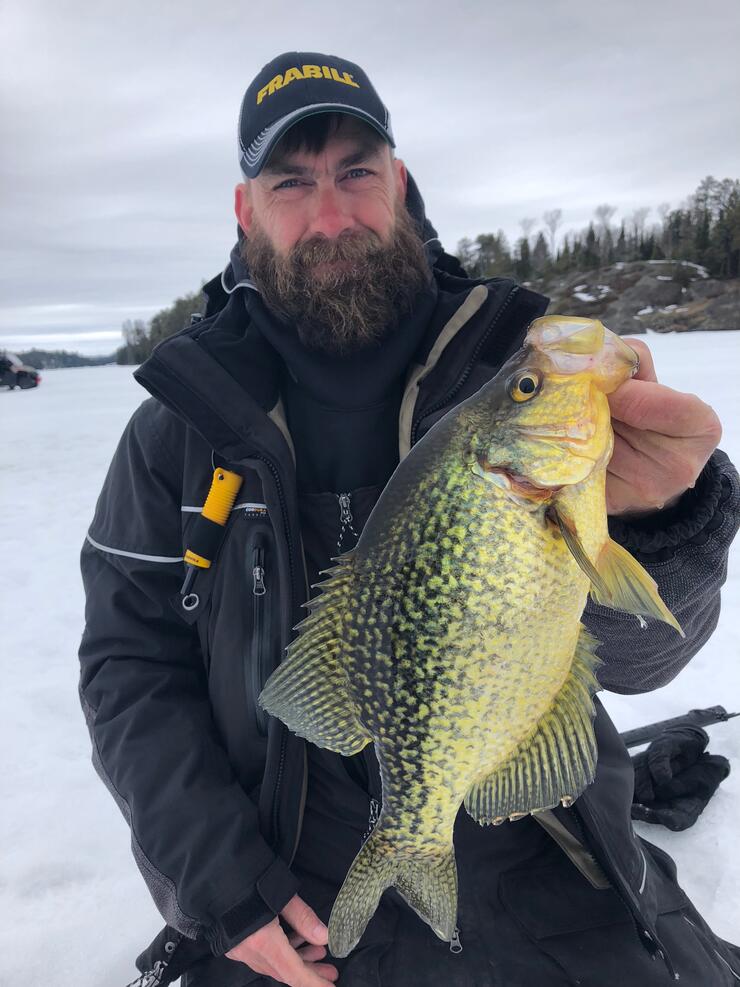
The good thing for anglers is that crappies group up in the winter so when you find them, you have probably found a significant portion of the population in that waterbody, all together. This can be a detriment to the fish because there are still some anglers out there who have a hard time releasing crappies. A few years back the daily limit was reduced to ten per day, which is still high if you are keeping big crappies, but it has helped. Crappies are slow growing in this extreme northern part of their range. Those big fish are eight to ten years old, they simply don’t grow as quickly as they do farther south. This makes them the easiest fish that we have to clean out of a lake or area.
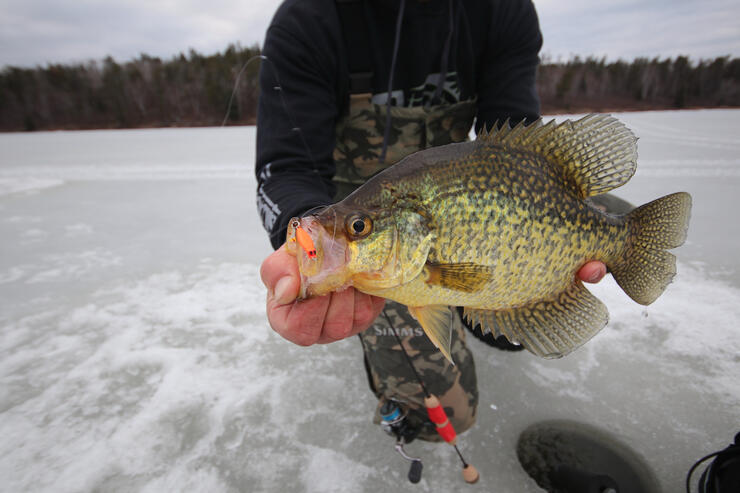
If you get on a crappie hole that hasn’t been fished too hard by other anglers you can expect to catch big fish in the 14” plus range. What we see is that once crappies receive too much pressure their size structure decreases quickly so when you get in a good spot, keep a few to eat and release the rest.
How to catch crappies through the ice
Finding crappies under the ice is the biggest challenge that anglers face. Once you find them, they are usually easy to catch. As I mentioned above, electronics are critical because crappies almost always suspend at least a few feet above the bottom. Crappies are also known to look up because of the position of their eyes so all anglers should know that you will catch more fish if you can keep your bait just slightly above them.
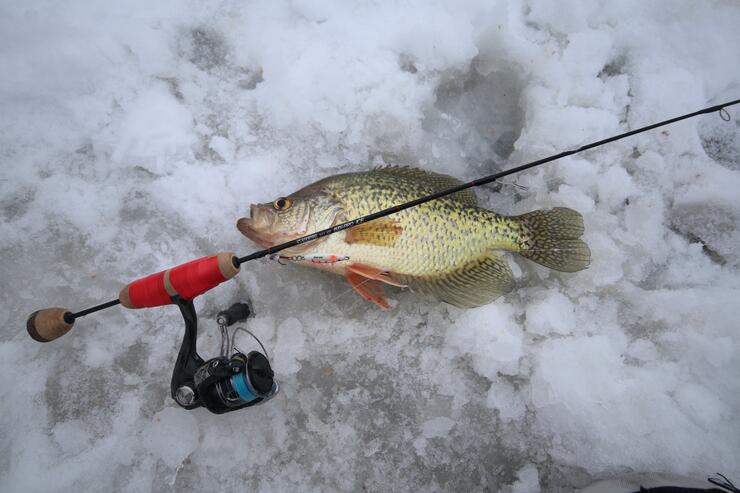
When it comes to choosing baits to drop down the hole, the first consideration for me is that I want a spoon or jig with a little bit of weight to it—so it will get down quickly to fish that I mark on my sonar. This doesn’t mean big, oversized walleye jigs, I just mean crappie baits that are on the bigger side so you aren’t fighting with your line to get it down the hole.
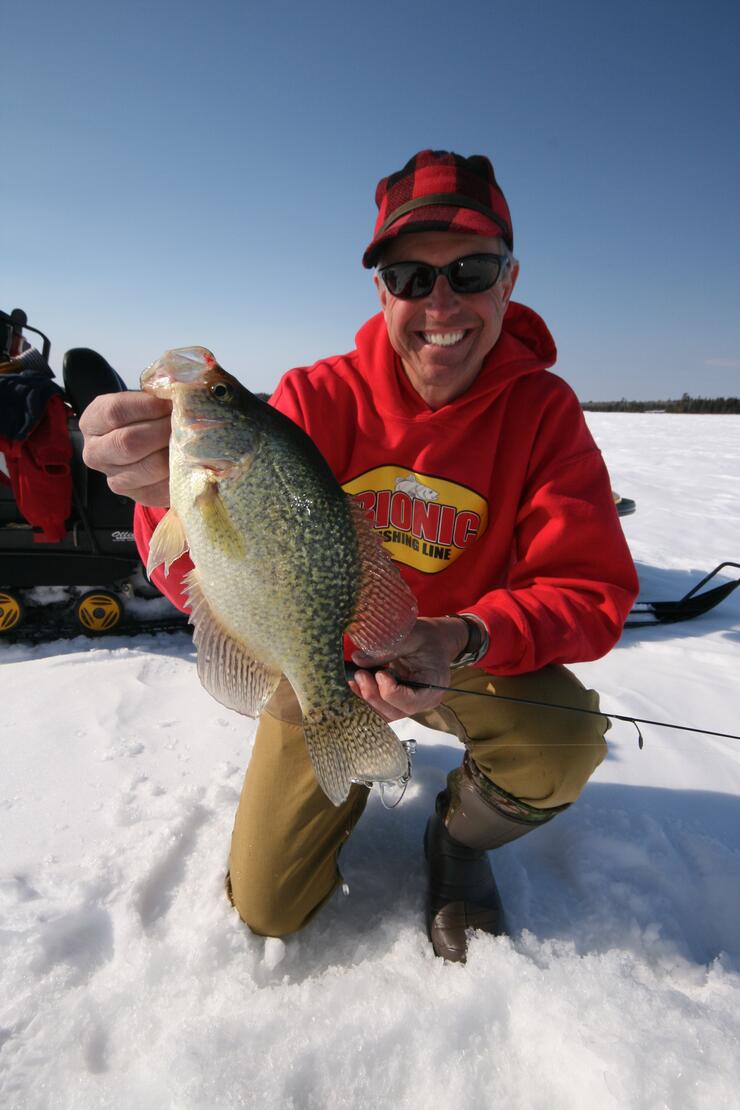
A small jig tipped with a live minnow will catch most crappies that you put it in front of but, to be honest, there is no need for meat to catch crappies. A small spoon tipped with some soft plastic maggot or larvae imitators is one of my top producers. Of course, like with all fishing, there are days when the bite is tougher and you need to bring a little bit of finesse.
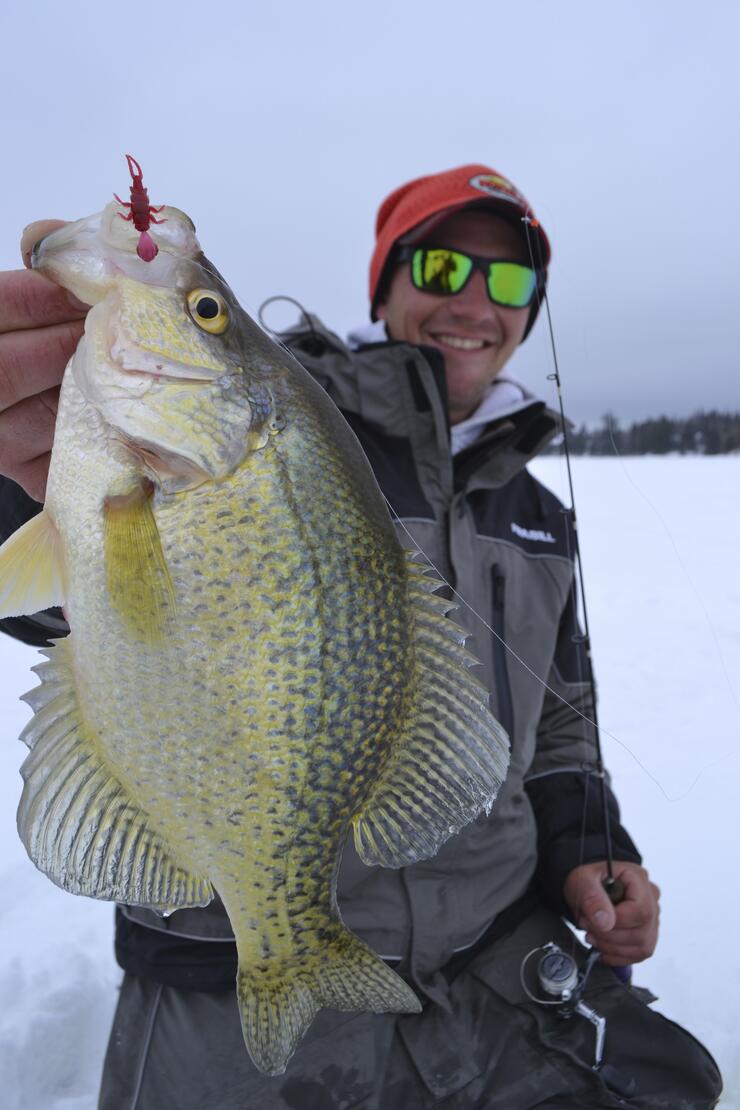
My backup rig is a jig tipped with a soft plastic bug imitator of some kind. The color of your bait can make a difference some days. I carry a variety of dark colors, some natural white colors as well as a few bright-colored baits. For some reason, pink is always a good one for crappies on most waters in Northwest Ontario.
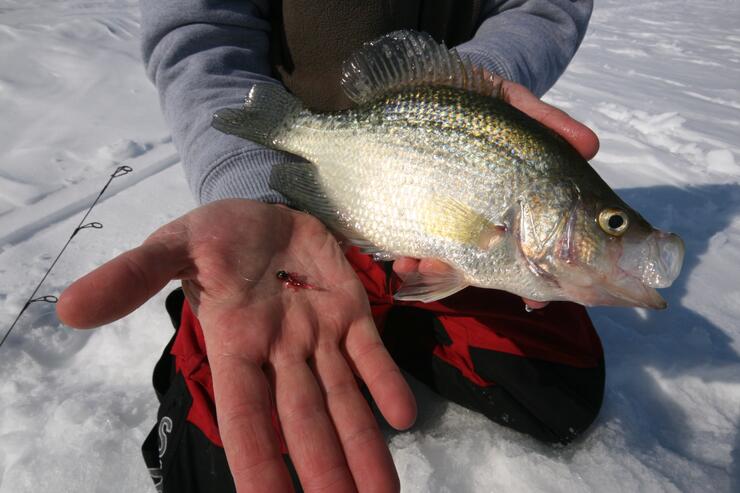
If you’re interested in catching some crappies through the ice, we have some amazing options across the region for both big fish and numbers. They can be caught throughout the season but early in the season gives you the first crack at some of the more popular areas, while late in the season you are probably going to get to enjoy some nicer weather.
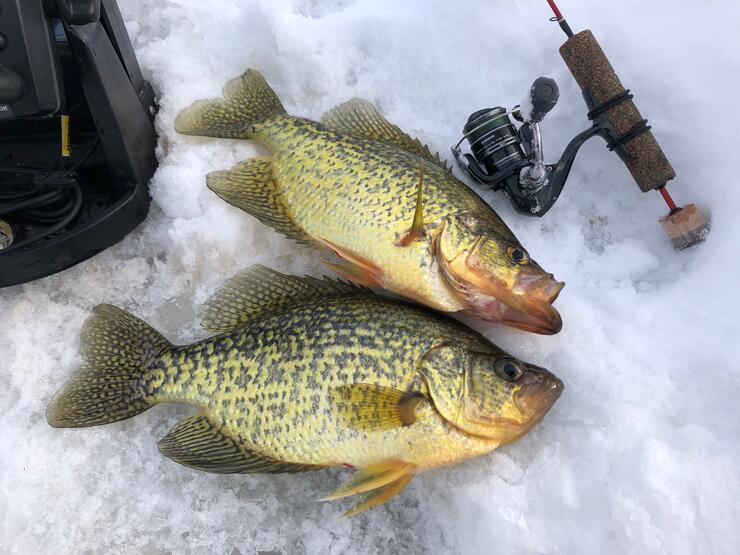
The season is open for crappies year-round in Northwest Ontario so anytime you want to come and drill some holes, you’ll be welcome.
Recommended Articles

Is the 1,400 Kilometre Drive to Northwest Ontario For a Fishing Trip Worth it?
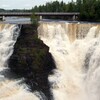
8 must-see waterfalls

6 Ways to Get Your 10,000 Steps This Fall

Top 5 Reasons You Should Be Fishing in Morson, Ontario

Discover The Winnipeg River

Enjoy Sunset Country's Fall Colours on Your Next Road Trip

Fishing in the Fall?

6 Reasons to Book a Fall Vacation to Sunset Country

10 Reasons to Avoid Ontario’s Sunset Country

Heading Across Canada?

A Guide to Sunset Country Museums
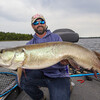
The Promised Land: Best Muskie Fishing in Ontario

Fall Fishing Tips
5 Essential Boreal Experiences in Ontario's Sunset Country

5 Obscure Facts About Northwestern Ontario: Were You Aware of These?
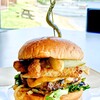
Great Food in Relatively Unknown Places
Outdoor Medicine

A Guide to Bringing Your Pets on Vacation to Canada

There's more than just fishing in the Red Lake Region

5 Amazing Sights You Can Only See By Boat

Going Fishing in Canada?

Going fishing in Ontario?

Outdoor Adventure in Ontario's Northern Paradise
Planning A Family Fishing Trip to Canada

Tips from a Fishing Legend



